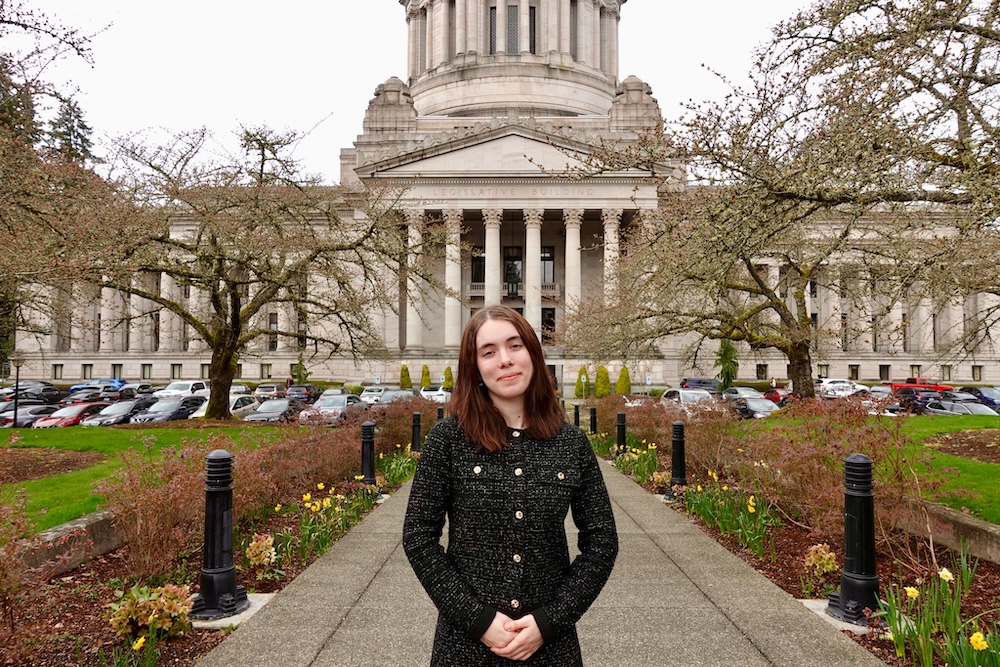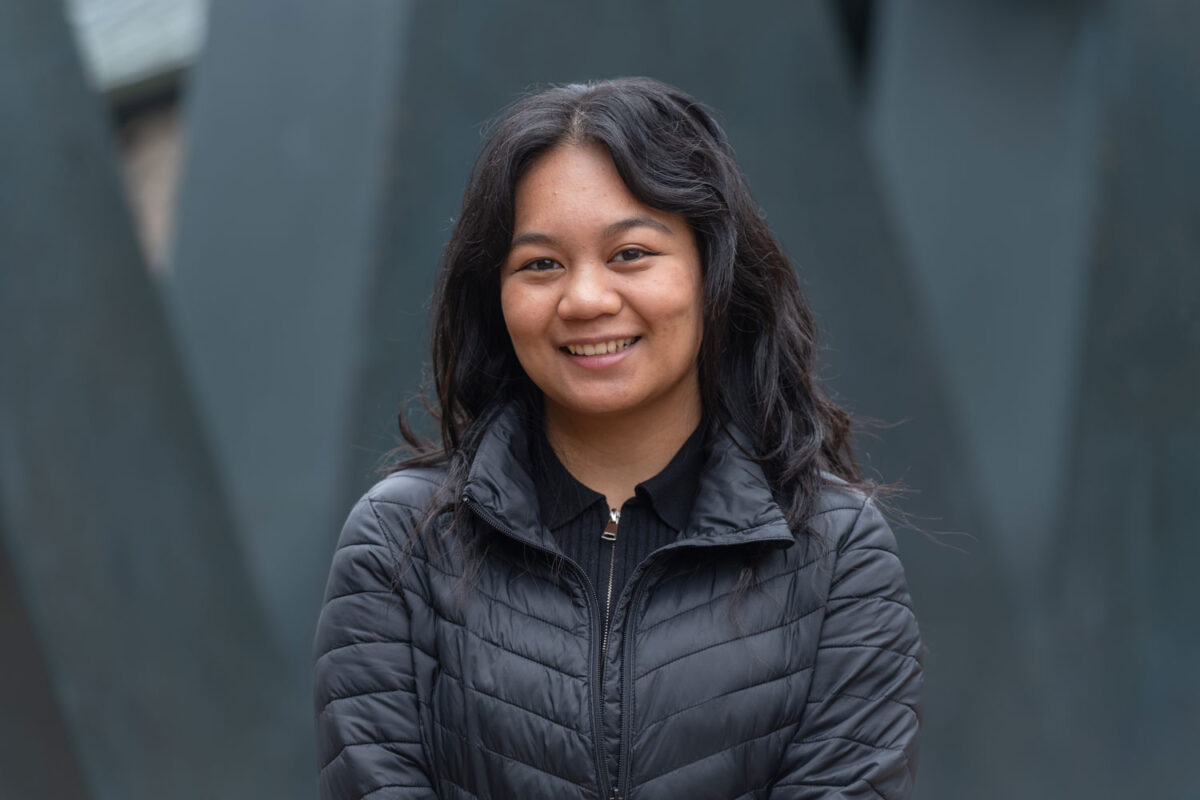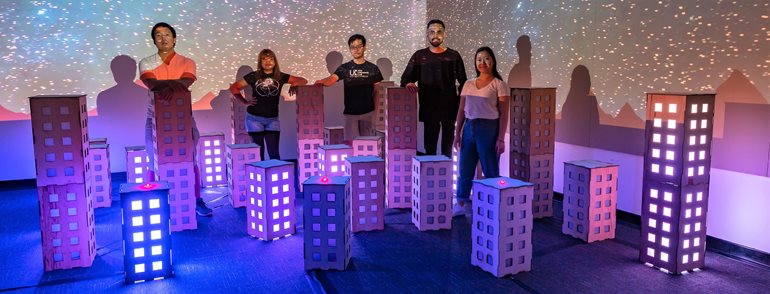
By Douglas Esser
Ironically, light pollution can be difficult to see. It may not dawn on people living in well-lit urban areas until someone asks, “When was the last time you saw the stars?” Light pollution could be described in words or measured in lumens, but on a personal level, it’s an experience.
Imagine you are looking over a city with light shining from high-rise windows, hearing the sounds of traffic. Then you push a button, and half the lights go out. You push another button, and they all go out. As your eyes adjust, previously unnoticed stars fill the sky, and traffic noise is replaced with crickets.
That’s the experience students created with a diorama and light projection in a room at the University of Washington Bothell. The thought-provoking installation, called Lumen, was one of six capstone projects presented by seniors in the Interactive Media Design (IMD) program.
Delving deeper
The one-night pop-up exhibition this spring of apps, games, videos and interactive experiences took over the top floor of the Activities & Recreation Center (ARC) and a couple of rooms in Discovery Hall. Each project had a wall in the ARC on which students posted how they delved deeper into the human-centered design process, from concept through prototypes and testing to final product.
Combining art and technology, the projects illustrated how the IMD major crosses disciplines in the schools of Interdisciplinary Arts & Sciences (IAS) and Science, Technology, Engineering & Mathematics (STEM). Both schools manage the program, and students advance in two-year cohorts.
The one-night pop-up exhibition this spring of apps, games, videos and interactive experiences took over the top floor of the Activities & Recreation Center (ARC) and a couple of rooms in Discovery Hall. Each project had a wall in the ARC on which students posted how they delved deeper into the human-centered design process, from concept through prototypes and testing to final product.
Combining art and technology, the projects illustrated how the IMD major crosses disciplines in the schools of Interdisciplinary Arts & Sciences (IAS) and Science, Technology, Engineering & Mathematics (STEM). Both schools manage the program, and students advance in two-year cohorts.
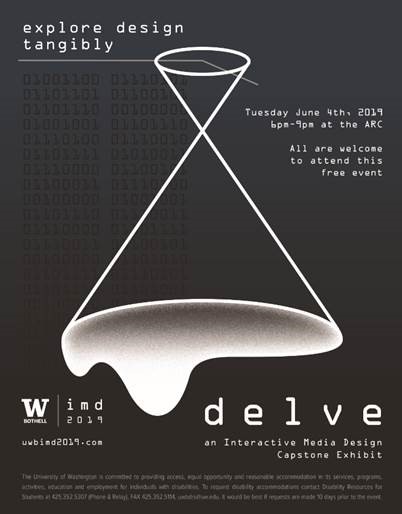
The exhibition, called Delve, was curated by Abraham Avnisan, IAS artist in residence and IMD faculty, along with Rachel Raymond, a member of the junior-year cohort. The juniors were responsible for marketing the event. They developed the Delve brand and produced promotional materials. Other key contributors were Sara McDermott, the IMD student adviser, and David Socha, the faculty coordinator.
IMD is for people who like a plurality of things, said Socha, associate professor in Computing & Software Systems.
“They want to design. They want to be with art. They want to do programming. And the way we’ve done it is a very collaborative process,” he said. “It’s done in cross-functional teams with people bringing very different skills and perspectives. You put them all together, and there’s beauty there.”
Emotional connection
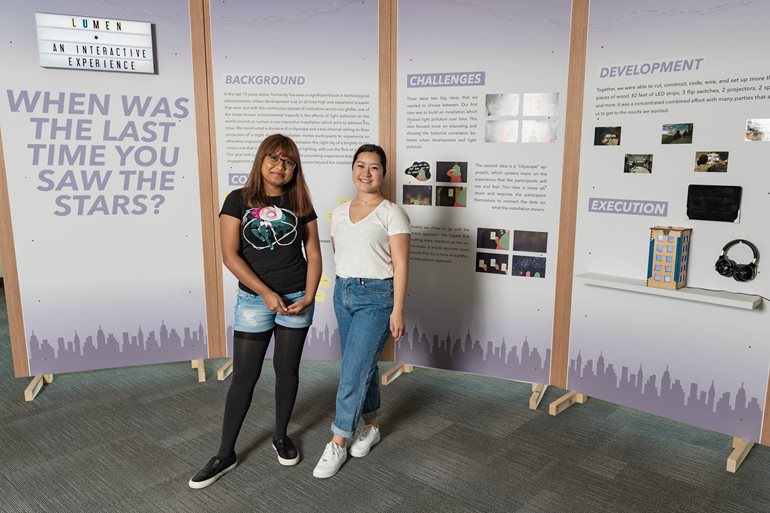
The initial idea for Lumen was an information exhibit where people would use an iPad to look at data and see visualizations, said Rutuja Nehra, one of the team members.
“We moved toward more of an abstract installation because we wanted people to have an emotional connection to what we were trying to convey about the effects of light pollution,” Nehra said. “You’re relating it to your personal experience.”
The students cut and assembled wood panels to build the cityscape. They installed LED lights and wired in two projectors. IMD is a hands-on major.
“I didn’t realize how much work it would be going into it, but every single quarter I have worked on a new project and every single quarter I’ve managed to put my heart and soul into every piece,” said Nehra, who originally was interested in computer science but instead chose IMD for a closer connection between technology and people.
“I love that we’re constantly encouraged to follow things that we’re passionate about and make a difference in our community,” she said.
Other members of the Lumen team were Paramdeep Hehar, Jeffrey Leung, Julian Ngo and Hannah Tashiro.
Interactive exhibits
Avnisan said his IMD class was like a production studio where everyone had to meet weekly deadlines as he offered feedback and perspective.
“One of the important foundations of the Interactive Media Design program is not only learning human centered design to create beautiful things but also thinking critically and thinking about social justice issues — and not taking technology and the tech world for granted,” Avnisan said.
Students also developed these prototypes that were exhibited at Delve:
- Gender Vender was a media campaign using a modified vending machine to raise awareness of gender inequality and also to raise money for organizations that support women’s rights. Playing with expectations around a vending machine were students Melissa Jones, Nicole Vannida Lee, Sergio Mejia-Manzano, Leah Shin and Tammy Tran.
- Inspose was an app that would allow local photographers to share their favorite locations. It would guide photographers to vantage points and offer tips on how to take better photos. Inspose was the work of Devyn Grillo, Roman Isakov, Jeff Oh, Kyle Rhodes and Jimmy Seifert.
- IntroSpect was an immersive art experience that invited users to cultivate self-reflection. Users put on a headset that turned their brainwaves into colors and designs. Providing another dimension to thoughts and feeling, IntroSpect was the work of Andrea Brado, Jacob Hanser, Mingbin Huang, Kevin Laird and Jacob Luna.
- Legacy was a role-playing video game for people undergoing physical therapy, providing motivation and entertainment. A companion app would give the physical therapists a way to monitor their patient’s progress. Legacy was the work of Alex Brighton, Rena Chen, Stephen Epperson, Colin Smith and Chelsea Tao.
- An app for female solo travelers, journi compiled emergency information and included a feature to call for help if the traveler went for a period of time without connecting. It was the project of Angela Birchman, Su Li, Benjamin Siev, Junior Tran-Thien and Yin Yin.
Creating experience
Socha, the faculty coordinator, described Delve as a museum that appeared for three hours then disappeared. People could walk around and enjoy the products. Students and faculty could take pride in what they had created.
“These are experiences,” he said.

